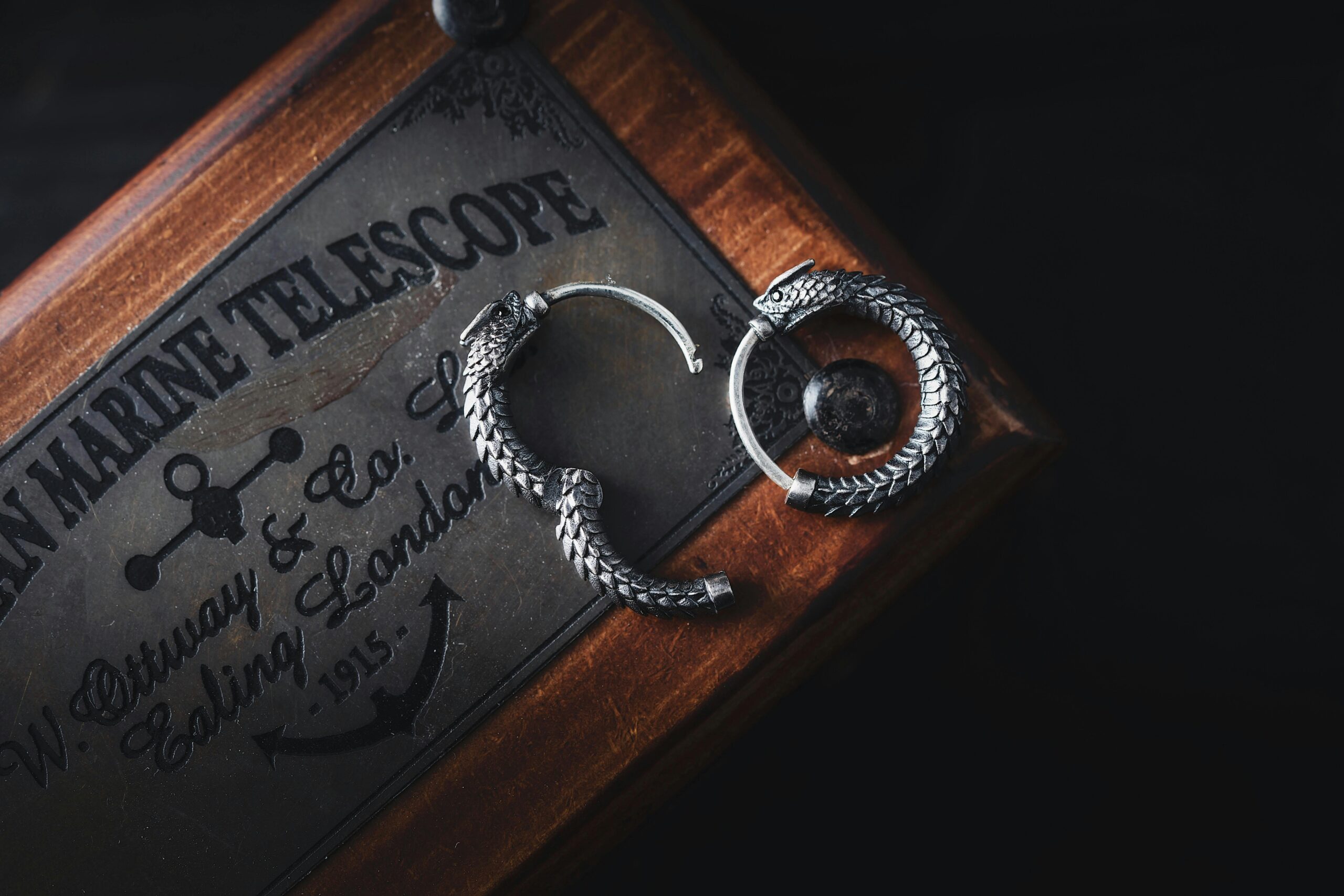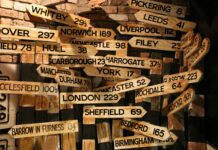Discover the enchanting city of Sheffield, England, a place where rich history meets vibrant modern life. Have you ever wondered what makes Sheffield silver so uniquely treasured across the globe? Nestled in the heart of South Yorkshire, Sheffield is renowned not just for its stunning landscapes but also for its world-famous silverware craftsmanship. This city has been a global leader in silver manufacturing for centuries, blending traditional techniques with cutting-edge innovation. You’ll be amazed by how Sheffield’s silver industry has influenced both local culture and international markets, making it a hotspot for collectors and enthusiasts alike. But what secrets lie behind the glimmering beauty of Sheffield silverware? From intricate designs to durable quality, the story behind these exquisite pieces is as fascinating as the city itself. Whether you’re a history buff, a jewellery lover, or simply curious about British heritage, exploring Sheffield’s silver legacy offers unparalleled insights into craftsmanship excellence. Plus, with the rise of sustainable and ethical production, Sheffield’s silver industry is evolving like never before—are you ready to uncover its latest trends? Dive into the world of Sheffield silver and discover why this English city continues to shine brightly on the global stage.
Unveiling Sheffield England Silver: 7 Stunning Craftsmanship Secrets You Didn’t Know
Sheffield England silver: A Sparkling Legacy That Still Shines
If you ever wondering about the connection between Sheffield and silver, you’re not alone. Sheffield, a city in South Yorkshire, England, is world-famous for its silverware, but not many people realise just how deep this association goes back. The phrase Sheffield England silver often pops up when discussing fine cutlery, jewellery, or even decorative items, but it’s more than just shiny metal. It’s a whole culture and history packed into one sparkling story.
Why Sheffield? Well, back in the 18th and 19th centuries, Sheffield became the hub of silver manufacturing in Britain. Not because the silver mines were nearby—there weren’t any—but because of the city’s innovation and skilled craftsmanship. The local metalworkers started producing what was called “silver plate” using a technique named “ Sheffield plate.” This method involved fusing a thin layer of silver to a base metal, usually copper. Not really sure why this matters, but it made silver goods much more affordable and accessible to the masses. Suddenly, you didn’t need to be a wealthy lord to own a fancy teapot or cutlery set.
A quick glance at this table might help you understand the differences between types of silver products from Sheffield:
| Type of Silver Product | Description | Typical Use | Price Range |
|---|---|---|---|
| Sheffield Plate | Silver fused to copper base | Cutlery, teapots, trays | Affordable |
| Sterling Silver | 92.5% pure silver alloy | Jewellery, fine cutlery | Mid to high |
| Electroplated Silver | Silver layer applied via electrolysis | Everyday cutlery, ornaments | Low to mid |
| Britannia Silver | 95.8% silver content, stricter than sterling | High-end collectibles | High |
Not all silver is created equal, and Sheffield took advantage of that fact by mastering various techniques. Maybe it’s just me, but I feel like the city’s silver industry is a bit underrated outside of the UK. When you think about it, Sheffield England silver pieces have a unique charm that most other silver items just can’t match. Perhaps it’s the industrial heritage blending with artisanal skill, or just the fact that they’ve been crafting these goods for centuries.
If you’re curious about spotting authentic Sheffield silver, here’s a handy checklist for you:
- Look for the “crown” mark or the word “Sheffield” stamped on the piece.
- Check for the “925” hallmark indicating sterling silver.
- Notice the weight; genuine silver items tend to feel heavier than they look.
- Examine the design – Sheffield silver often features intricate patterns or floral motifs.
- Beware of cheap imitations; if it looks too shiny and new, it might be electroplated or fake.
People often ask, “Is Sheffield silver good investment?” Well, it depends. Genuine antique pieces can be worth a pretty penny, especially if they’re in good condition and have a maker’s mark from a renowned silversmith. However, like most collectibles, the value can fluctuate wildly. So, don’t go selling your grandma’s cutlery just yet unless you got a proper appraisal.
Here’s a little list of famous Sheffield silver manufacturers you might want to keep in mind:
- Walker & Hall: Known for their elegant cutlery and tea sets.
- Thomas Bradbury & Sons: Master silversmiths with a flair for decorative arts.
- William Hutton & Sons: Produced both Sheffield plate and sterling silver items.
- Mappin & Webb: A big name in jewellery and silverware, still around today.
Every time you come across a piece labeled Sheffield England silver, you’re holding a bit of history. The city’s silver industry was also a big employer back in the day, with thousands of workers involved in various stages of production—from mining the copper to polishing the finished product. Not that Sheffield is still flooded with silver workshops today, but the legacy lives on in museums and collectors’ cabinets worldwide.
Now, if you want some practical tips on taking care of your Sheffield silver, here they are:
- Avoid using harsh chemicals or abrasive cleaners; they can damage the silver’s surface.
- Use a soft cloth for polishing; microfibre is best.
- Store silver in a cool, dry place to prevent tarnishing.
- Consider wrapping items in anti-tarnish paper or cloth.
- For stubborn tarnish, a mild silver polish or homemade paste of baking soda and water does wonders.
Here’s a quick pros and cons list for Sheffield England silver products:
| Pros | Cons |
|---|---|
| Rich historical and cultural significance | Can be pricey, especially antiques |
| Durable and often beautifully |
How Sheffield England Silver Became the Gold Standard in British Silverware
Sheffield England silver: A Glimpse Into The City’s Shiny Past and Present
When you thinks about Sheffield England silver, what comes to your mind? Maybe a shiny spoon or some posh cutlery your gran insisted you use at Christmas dinner? Well, Sheffield’s connection with silver goes way beyond just fancy tableware. The city’s reputation as a centre for silver crafting dates back centuries, and honestly, it’s quite fascinating, even if you ain’t really sure why this matters, but it does.
A Bit of History (or so they say)
Sheffield, located in South Yorkshire, England, has been known for its metal industries since the 18th century. The Sheffield England silver industry bloomed in the 1700s, when silversmiths started to produce fine silverware that was both durable and beautiful. The town’s proximity to coal and iron ore made it the perfect place for metalworking.
| Year | Event |
|---|---|
| 1743 | First known silverware workshops open |
| 1850 | Sheffield silverware gains international fame |
| 1880 | Introduction of electroplating in Sheffield |
| 20th Century | Sheffield becomes synonymous with cutlery and silverware |
Not really sure why this matters, but the electroplating technique invented here allowed Sheffield to mass-produce silver-plated goods that looked like the real deal but cost less. So, you could have your posh dinner party without emptying your wallet. Clever, right?
Why Sheffield Silverware Is So Coveted
Maybe it’s just me, but I feel like Sheffield’s silverware has a kind of charm that other places just don’t match. It’s not just about looks; the quality and craftsmanship involved is top-notch. Sheffield silversmiths used to handcraft every piece, ensuring each item was unique. Today, some workshops still keep that tradition alive, while others rely on modern tech.
Here’s a quick look at what makes Sheffield England silver stand out:
- High-quality silver content (usually 92.5% sterling silver)
- Intricate designs that reflect British heritage
- Durability and resistance to tarnishing
- Historical value that collectors adore
Of course, if you are buying silverware from somewhere claiming it’s “Sheffield silver” but it’s dirt cheap, you might wanna think twice. Not all that glitters is silver, or so they say.
Where to Find Authentic Sheffield England Silver Today
If you are keen to add some authentic Sheffield England silver to your collection, you got a few options. Antique shops, auctions, and specialised jewellery stores in Sheffield itself are goldmines (or should I say silver mines?) for genuine pieces. Don’t forget to check for the hallmark which is a stamp showing the maker, purity, and date.
| Place | What To Look For | Price Range |
|---|---|---|
| Sheffield Antique Shops | Hallmarked silverware from 18th-20th Century | £50 – £1000+ |
| Online Auctions | Verified sellers with good reviews | £30 – £800 |
| Local Jewellery Stores | New silver pieces, often Sheffield made | £40 – £500 |
It’s important you do a bit of homework beforehand. Some sellers might try to pass off silver-plated items as solid silver, which isn’t the same thing, right?
Practical Insights: Caring for Your Sheffield Silver
If you lucky enough to own some Sheffield silver, you probably wanna keep it looking sparkling for years. Silver is notorious for tarnishing, especially if left out in the open. Here’s a quick guide on how to look after your Sheffield England silver without making a right mess of it.
- Regular Polishing: Use a soft cloth and silver polish. Don’t scrub like you’re cleaning the oven, or you might scratch it.
- Proper Storage: Store silver in anti-tarnish bags or wrap in acid-free tissue paper. Avoid plastic bags as they trap moisture.
- Avoid Harsh Chemicals: Don’t let your silver come in contact with bleach or ammonia, unless you want it ruined.
- Use It Often: Believe it or not, using your silverware regularly can help prevent tarnish build-up.
One handy trick my nan showed me was to use baking soda and warm water to clean silver. Works like a charm and doesn’t involve any weird chemicals.
Fun Facts About Sheffield’s Silver Legacy
- The city once produced more than 60% of the world’s cutlery and silverware. Imagine that!
- Sheffield’s silver hallmark includes a crown symbol, which is quite distinctive.
- The famous Sheffield Plate technique was an early form of silver plating developed in the 18th century.
- Some of the finest silver collections in the UK museums
The Timeless Allure of Sheffield England Silver: Top Techniques Behind Its Iconic Shine
Sheffield, England silver – it’s a phrase that might sound like just a jumble of words to many, but it actually holds a pretty interesting story if you dig a bit. Now, I’m not saying Sheffield is the only place you can find silver, but it’s definetly got a rich history with it that’s hard to ignore. You might be wonderin’, why Sheffield? Well, not really sure why this matters, but the city earned a solid rep for its silverware and cutlery production over the centuries, making it a big player in the world of silver craftsmanship.
The Sheffields’ Silver Legacy – A Quick Look
Back in the day, Sheffield was known as the “Steel City” for obvious reasons, but alongside steel, silver had a big role in shaping the local industry. Sheffield silver was often used to make all sorts of things, from fancy tea sets to intricate jewellery. Maybe it’s just me, but I feel like silver from Sheffield carries a bit of charm that you don’t get elsewhere, probably because of the tradition and craftsmanship involved.
Here’s a little table showing the different types of Sheffield England silver products and their common uses:
| Product Type | Typical Use | Era Most Popular |
|---|---|---|
| Silver Cutlery | Dining utensils | 18th – 19th Century |
| Silver Jewellery | Rings, brooches, necklaces | Victorian Era |
| Silver Tableware | Tea sets, trays | 19th Century |
| Silver Trophies | Awards, commemorations | 20th Century |
You see, the variety was huge and the quality was something else. Sheffield’s silversmiths often marked their work with distinctive stamps that collectors today drool over. So if you ever find a piece of antique Sheffield silverware in your grandparent’s attic, hold on to it – it might be worth a pretty penny.
How Sheffield Became Synonymous with Silver
The story behind Sheffield’s silver isn’t just about the metal itself, but also about the innovation. The folks in Sheffield were pretty clever, inventing new techniques to make silver goods more affordable and accessible. Like, they developed a process called “silver plating” that allowed cheaper metals to be coated with a thin layer of silver. Not everyone was happy about this, mind you, as some traditionalists grumbled it cheapened the craft. But it did help Sheffield dominate the market for silver goods for a long time.
I guess the question is, does this old-school silver stuff still matter today? You bet it does. Lots of collectors and historians think the Sheffield England silver hallmark is a key to unlocking the city’s past, and it’s a symbol of pride for many locals. Plus, vintage silver is still pretty trendy in home decor circles, so it’s not just about history, it’s about style.
Practical Tips for Buying Sheffield Silver
If you’re looking to buy some authentic Sheffield silver items, here’s what you should keep in mind. First off, always check for those hallmark stamps. They usually include symbols like a crown, a date letter, or the city’s mark (a crown over an anchor). Without these, it’s hard to know if the silver is legit or just some cheap knockoff.
Secondly, know the difference between solid silver and silver-plated. Solid silver is usually marked “Sterling” or “925,” meaning it’s 92.5% pure silver. Silver-plated items won’t have this, and they’re usually less valuable.
Here’s a quick checklist for spotting genuine Sheffield England silverware:
- Look for hallmark stamps (crown, anchor, date letter)
- Check for “Sterling” or “925” markings
- Inspect the item for wear (silver plating might show base metal underneath)
- Ask the seller about provenance or history of the item
- Beware of prices that look too good to be true (they usually is)
Sheffield Silver in Today’s Market
Now, I know what you’re thinking – silver is silver, right? Well, not exactly. Sheffield silver has a kind of aura around it, due to the city’s history and the quality of craftsmanship. Some modern silversmiths still produce pieces inspired by those classic Sheffield designs, trying to keep the tradition alive.
Below is an example list of places where you might find real Sheffield England silver goods or antiques:
- Local Sheffield antique shops – treasure troves if you got time.
- Online auction sites – but watch out for fakes.
- Specialist silver dealers in the UK.
- Flea markets and car boot sales (you might get a bargain).
- Museums with silver collections (for inspiration, not buying).
Honestly, I’d recommend seeing the
Why Collectors Are Obsessed with Sheffield England Silver: 5 Must-Know Facts
Sheffield, England Silver: A Shiny Tale of Metal and History
Sheffield, a city in the north of England, is well-known for many things: steel production, the beautiful Peak District nearby, and… silver? Yeah, you read that right. It might sound odd, but Sheffield England silver has a history that doesn’t get talked about as much as its steel counterpart. Maybe it’s just me, but I feel like people overlook the fact that Sheffield was once a big player in silverware, not just knives and forks.
Back in the day, Sheffield’s silversmiths were busy crafting some of the most exquisite silver items in the UK. The city’s reputation for metalwork wasn’t just limited to stainless steel; it extended into the realm of silver, too. This was because the skilled artisans in Sheffield had the knowledge and tools to shape silver into beautiful, intricate designs. Funny thing is, the silver industry in Sheffield has faded over the years, but if you look carefully, you’ll find plenty of Sheffield England silver pieces hidden in antique shops or family heirlooms.
Sheffield Silver History: A Quick Overview
| Year | Event |
|---|---|
| 1740s | First silver workshops established |
| 1850s | Peak production of silverware |
| Early 1900s | Decline begins due to global competition |
| Present Day | Revival among collectors and artisans |
Not really sure why this matters, but the hallmarking system in Sheffield was one of the earliest in England. Hallmarks are those tiny stamps you see on silver items, which tell you how pure the silver is, the maker, and where it was made. Sheffield’s hallmark often included a crown symbol which made it stand out from London’s leopard head mark. This little detail made Sheffield England silver quite sought after by collectors looking for authenticity.
Why Sheffield Silver Is Different
If you ever held a piece of Sheffield silver, you might notice it feels a bit more robust than silver from other areas. That’s because Sheffield craftsmen had a reputation for blending durability with elegance. The silver items were not only pretty but also made to last, which is something that’s not so common nowadays with mass-produced goods.
Here’s a quick list of common Sheffield silver items you might stumble upon:
- Tea sets (pots, cups, sugar bowls)
- Cutlery and serving utensils
- Decorative plates and trays
- Jewellery (rings, brooches, cufflinks)
- Trophies and commemorative items
One thing that I find a bit annoying is that a lot of these silver pieces don’t get the appreciation they deserve. People often confuse Sheffield silver with just “silver-plated” items. To be clear, silver plating means there’s only a thin layer of silver over a base metal. True Sheffield silver is solid silver, often sterling (92.5% silver), which is way more valuable.
Practical Insight: How to Spot Genuine Sheffield England Silver
| Feature | What to Look For | Why It Matters |
|---|---|---|
| Hallmark | Crown symbol + date letter + maker’s mark | Confirms origin and authenticity |
| Weight | Heavier than silver-plated equivalents | Indicates solid silver |
| Tarnish | Silver darkens naturally over time | Silver-plated may show rust spots |
| Design intricacy | Detailed, hand-crafted patterns | Mass-produced items lack detail |
If you’re buying silverware or collectibles, don’t be shy about asking for these details. It’s your money after all! And remember, some sellers might try to pass off silver-plated stuff as genuine just because it looks shiny.
Silver in Sheffield Today: More Than Just Old Stuff
The industrial history of Sheffield is deeply intertwined with metals, but nowadays, the city’s silver scene is more about restoration and bespoke crafts than mass manufacturing. You’ll find a few workshops where artisans make or repair silver items, keeping the tradition alive. Not really sure why this matters, but supporting these local craftspeople is a great way to connect with Sheffield’s heritage.
Interesting Facts About Sheffield Silver
- The city’s silversmith guilds date back over 200 years.
- Sheffield was once the largest producer of silverware in the UK, rivaling London.
- Some museums in Sheffield have impressive collections of silver objects, showcasing the city’s craftsmanship.
- The “Sheffield plate” technique, which fuses silver and copper, was developed here and revolutionised silverware production in the 18th century.
If you’re into history or just like shiny things, a visit to Sheffield’s museums or antique shops might be worth your time. You never know what Sheffield England silver treasures you might find. It’s like a treasure hunt, but with less
Exploring the Heritage and Craftsmanship of Sheffield England Silver: A Complete Guide for Enthusiasts
Sheffield England Silver: More Than Just Shiny Metal?
When you think about Sheffield England silver, you probably imagine gleaming cutlery or maybe, posh jewellery that your nan treasures. But let me tell you, this city’s relationship with silver is far deeper than just table spoons and rings. Sheffield was once the heart of silverware production in England, and if you’re a history buff or just someone who loves a bit of sparkle, this place is full of stories and shiny stuff. Not really sure why this matters, but the city’s silver legacy still influences its identity today.
A Brief History of Sheffield Silver
Back in the 18th century, Sheffield was booming because of its steel and silver industries. The mix of these metals created some of the best cutlery and silverware in the world, and it wasn’t just local people buying them. Folks from all over the globe wanted Sheffield England silver. The term “Sheffield plate” was coined to describe silver plated items, where a thin layer of silver was fused onto copper. This technique was revolutionary at the time, making silver goods more affordable without loosing that luxurious shine. Maybe it’s just me, but I feel like that’s pretty clever for the 1700s.
| Year | Event | Significance |
|---|---|---|
| 1743 | Sheffield plate invented | Made silver goods affordable |
| Late 1800s | Peak of Sheffield silver industry | Global recognition for quality silverware |
| 20th Century | Decline due to mass production | Silverware became less exclusive |
The above table barely scratches the surface, but it gives you some idea of how Sheffield England silver evolved through time. This city wasn’t just a one-hit wonder; it kept innovating.
Why Sheffield Silver Still Matters Today
You might be wondering, “Why should I care about Sheffield silver in 2024?” Well, for starters, there’s still a thriving community of silversmiths in Sheffield. These artisans keep traditional methods alive, crafting unique pieces that you won’t find anywhere else. Plus, the designs often combine old-school charm with modern twists. If you ever visit Sheffield, pop into one of these workshops or galleries. Trust me, it’s worth it.
Here’s a quick list of what makes Sheffield England silver stand out even now:
- Unique blend of tradition and innovation
- High-quality craftsmanship
- Rich cultural and industrial heritage
- Collectible value for vintage pieces
- Sustainable practices in contemporary silverwork
Not sure if you noticed, but these points kinda overlap. I guess great silverware just ticks a lot of boxes.
Where to Find Authentic Sheffield Silver
If you’re looking to buy some silver Sheffield style, here’s a quick guide to where you can find the real deal:
| Place | What You’ll Find | Price Range | Tips |
|---|---|---|---|
| Sheffield Antique Shops | Vintage silverware and collectibles | £50 – £500+ | Check for “Sheffield” stamps |
| Local Craft Markets | Handmade silver jewellery and gifts | £30 – £200 | Support local artisans |
| Online Marketplaces | Mix of vintage and new items | £20 – £1000+ | Beware of fakes, ask for proof |
| Museums (like Weston Park) | Historical silver exhibits | N/A | Great for learning, no buying |
Sheffield really has something for every silver enthusiast, whether you’re a collector or just want a little bling for your tea set.
The Environmental Side of Sheffield Silver
Not many people talk about this, but the silver industry in Sheffield also has an environmental story. The old factories were not the cleanest places on earth, and pollution was a real problem. Nowadays, many silversmiths are trying to be more eco-friendly by recycling silver and using less harmful chemicals. Funny how something so shiny has a bit of a dark past, huh?
Here’s a quick breakdown of the environmental impact and improvements:
| Aspect | Past Issues | Modern Solutions |
|---|---|---|
| Waste Management | Toxic waste from silver plating | Recycling silver scraps |
| Energy Use | High energy consumption | Using renewable energy sources |
| Chemical Use | Harmful chemicals in production | Safer, eco-friendly alternatives |
Maybe it’s just me, but I think it’s important to care about where your shiny things come from, not just how they look.
Fun Facts About Sheffield England Silver
- The term “Sheffield plate” was so popular that it became a generic term for silver-plated goods, even those made elsewhere.
- Sheffield silver cutlery was once considered a status symbol in Victorian England.
- Some of the oldest pieces of Sheffield silver can be
Conclusion
In conclusion, Sheffield’s rich heritage as a centre of silver craftsmanship is a testament to the city’s enduring dedication to quality and artistry. From its historical prominence in producing exquisite silverware to the modern-day innovators who continue to uphold these traditions, Sheffield silver remains a symbol of elegance and durability. The unique blend of traditional techniques and contemporary design ensures that Sheffield silver pieces are not only beautiful but also timeless. Whether you are a collector, a history enthusiast, or simply appreciate fine craftsmanship, exploring Sheffield silver offers a fascinating glimpse into England’s industrial and artistic legacy. For those looking to invest in or gift something truly special, Sheffield silver presents an opportunity to own a piece of history that continues to shine. Embrace the legacy and discover the charm of Sheffield silver for yourself—its story is as captivating as the pieces it produces.













